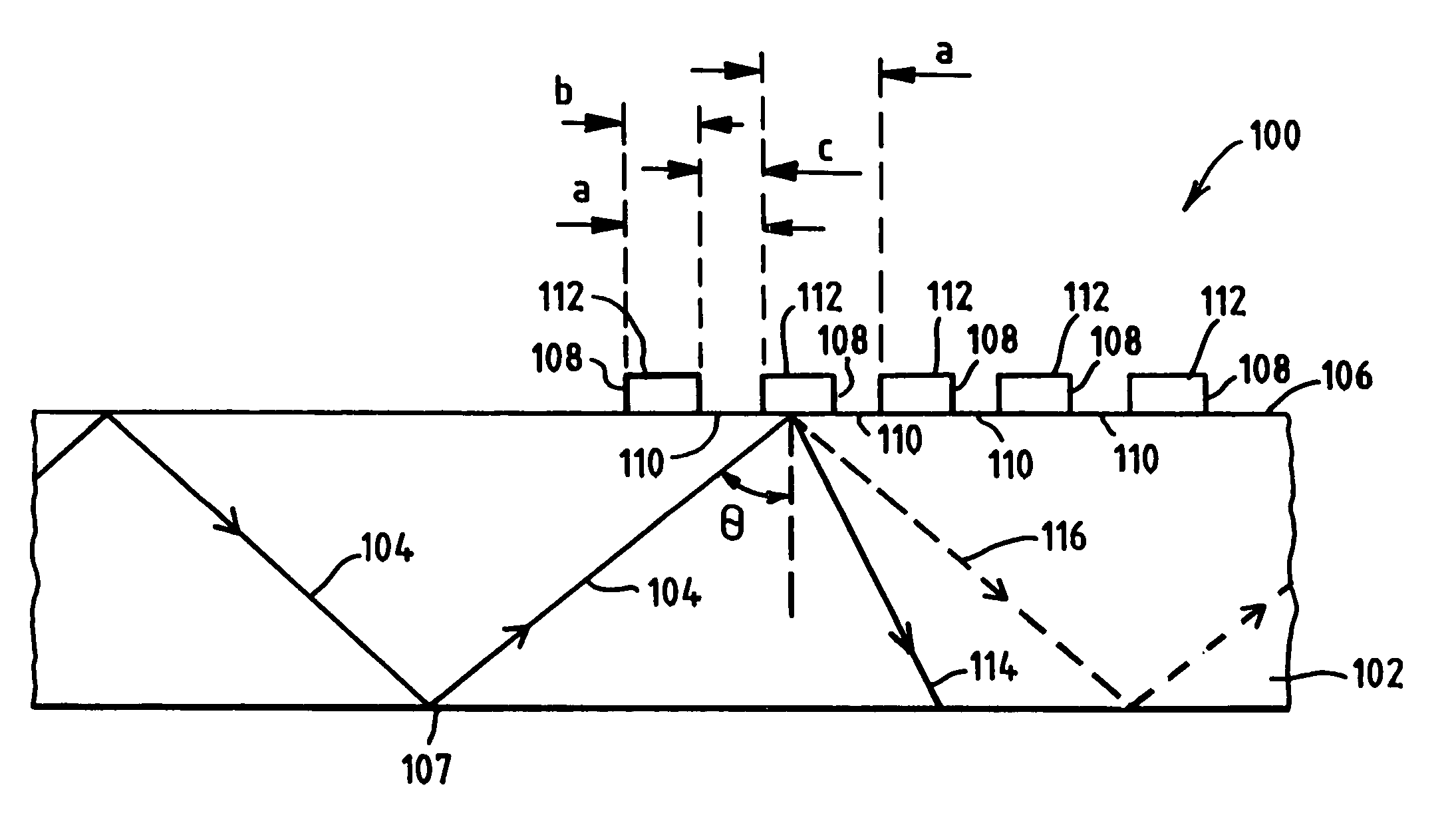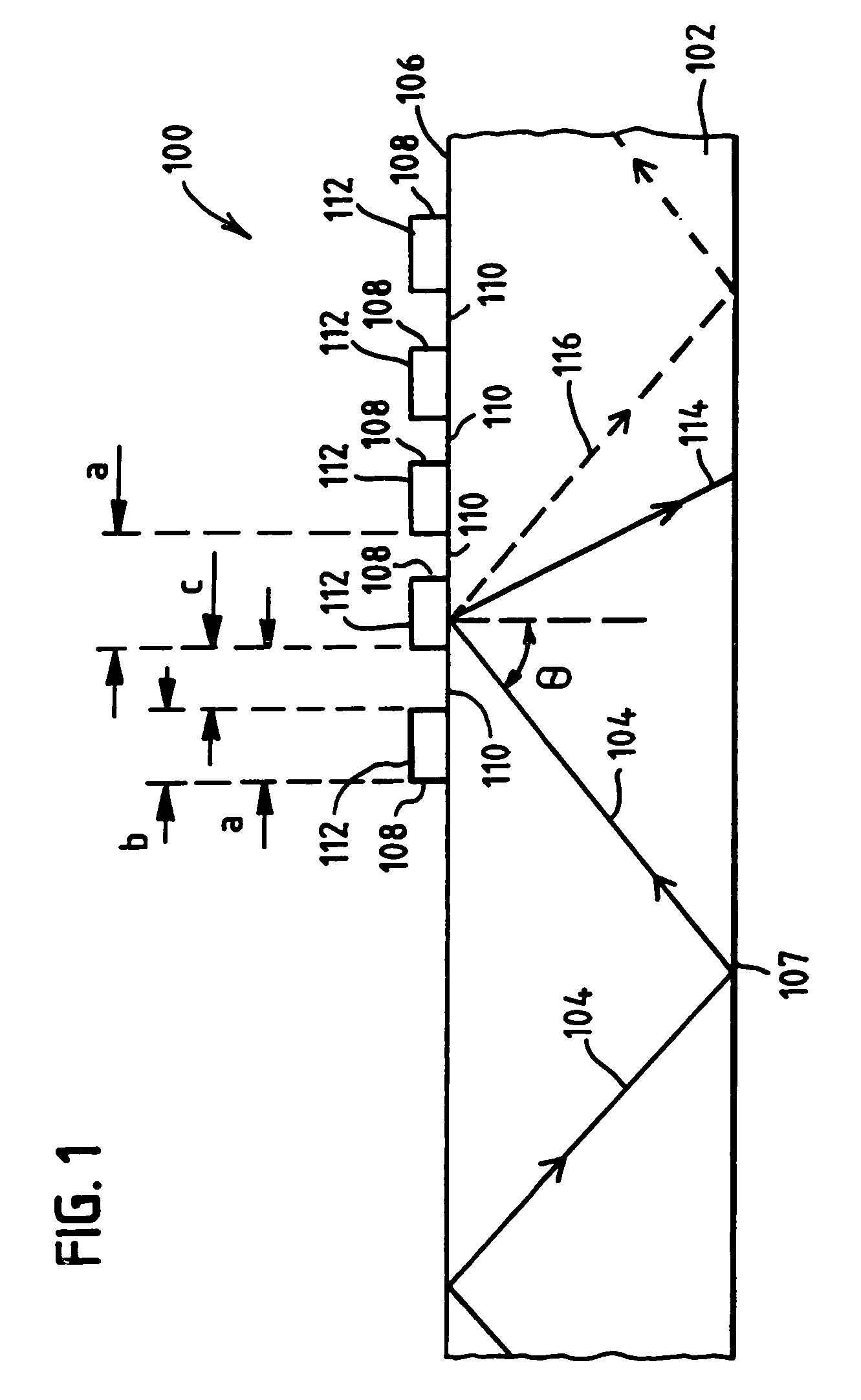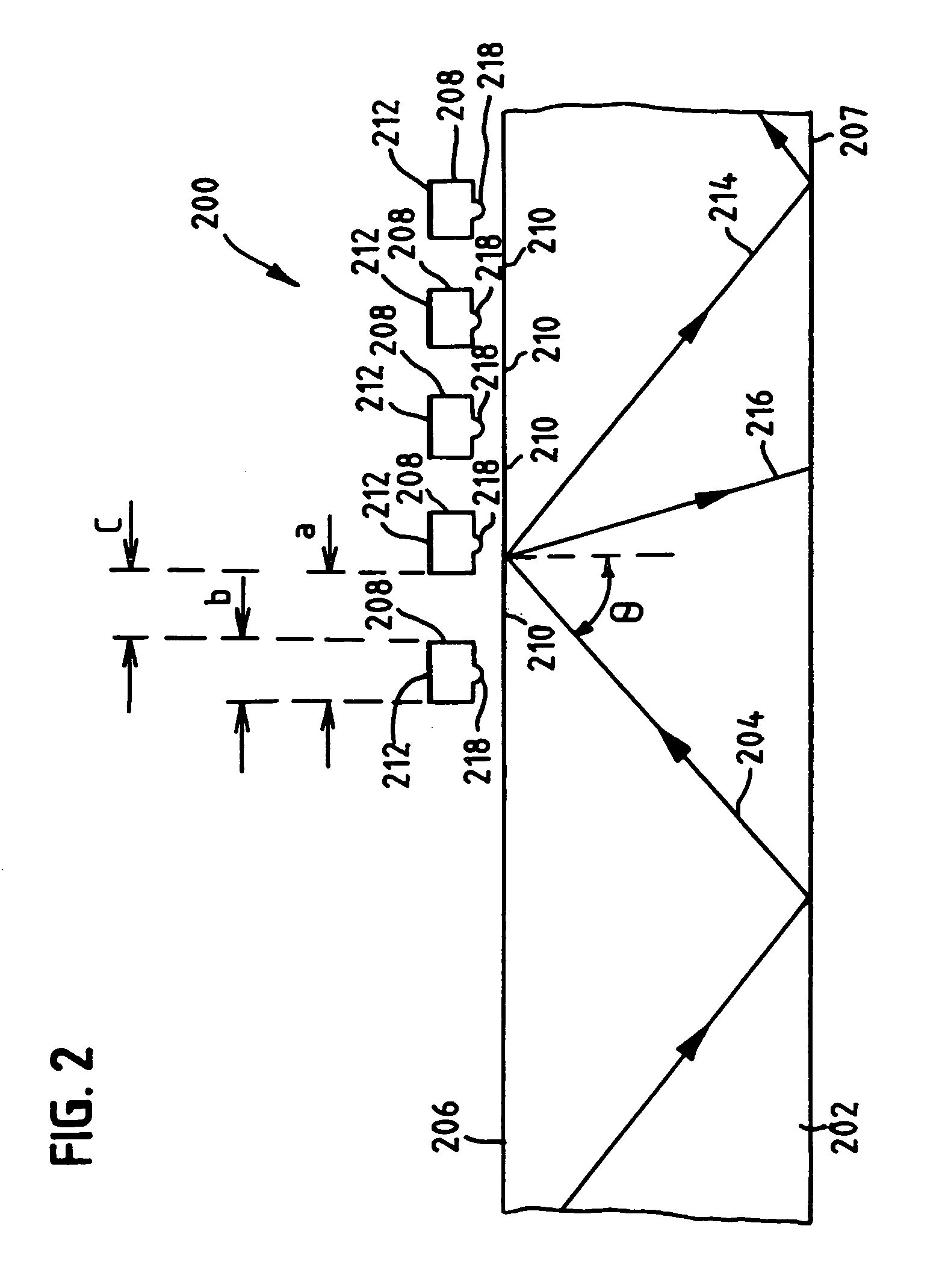Optical switch with moveable holographic optical element
a technology of optical switches and holographic elements, applied in the field of optical elements, can solve the problems of difficult mass production, complex optical systems, and limited use of hoists as optical switches
- Summary
- Abstract
- Description
- Claims
- Application Information
AI Technical Summary
Problems solved by technology
Method used
Image
Examples
Embodiment Construction
[0028]The present disclosure solves the above-described problems by providing a HOE that is easily fabricated and usable with an optical substrate to form an optical switch. Preferably, the HOEs described hereinbelow are grating structures that are moveable relative to an optical substrate within which a light signal travels. The movement of the HOE functions to couple and decouple the HOE with the substrate, so that if a light signal is traveling in the substrate the HOE may selectively interact with the light signal. For maximum efficiency, light is made to travel in the optical substrate under total internal reflection (TIR), which as will be understood includes a range of propagation paths of the light traveling in the substrate. Total internal reflection is a well known phenomena that allows light to be reflected from the interface between two optical materials without losses. This occurs if light is propagating in a material with a higher refractive index than a surrounding op...
PUM
 Login to View More
Login to View More Abstract
Description
Claims
Application Information
 Login to View More
Login to View More - R&D
- Intellectual Property
- Life Sciences
- Materials
- Tech Scout
- Unparalleled Data Quality
- Higher Quality Content
- 60% Fewer Hallucinations
Browse by: Latest US Patents, China's latest patents, Technical Efficacy Thesaurus, Application Domain, Technology Topic, Popular Technical Reports.
© 2025 PatSnap. All rights reserved.Legal|Privacy policy|Modern Slavery Act Transparency Statement|Sitemap|About US| Contact US: help@patsnap.com



